Cladosporium, penicillium, stachybotrys chartarum — no matter what you call it, household mold is a serious problem. In U.S. residential buildings alone, the population-weighted average prevalence of mold is a shocking 47%. For contractors who want to ensure their customers’ safety and comfort, understanding HVAC mold identification, remediation, and prevention is absolutely critical.
Beyond its widespread prevalence, mold growth in air conditioning systems can lead to serious health risks, including respiratory issues and allergic reactions, making it essential to address mold contamination proactively. In today’s guide to HVAC mold, learn to keep your customer safe with efficient strategies that keep air conditioners running efficiently and clients’ homes mold-free.
Common Causes of HVAC Mold
Excess moisture is the key factor that fuels residential mold growth. While mold contamination can develop in many areas around the home, the primary cause of HVAC mold is high indoor humidity levels. Factors like local climate and even frequent shower and bath use can elevate indoor humidity, leading to excess moisture buildup in and around a system that results in HVAC mold.
Another common cause of residential HVAC mold that’s also linked to high indoor humidity is poor ventilation. Without proper ventilation systems, humid air can accumulate inside the home and increase the risk of mold growth in nearby HVAC units. Ventilation solutions like bathroom exhaust fans and range hoods can help expel excess humidity, reducing moisture buildup in HVAC systems.
When HVAC mold is discovered, condensation is another important factor to consider. In humid and warm regions like Florida, units that run continuously often experience condensation, leading to moisture buildup around vents. Additionally, if condensate drain pans or lines become damaged or clogged, they cannot properly remove condensation from the system, increasing the risk of mold growth.
The Risks of HVAC Mold
Mold-contaminated HVAC systems can pose serious health risks to customers, from homeowners and their families to commercial building owners and their clientele. According to the EPA, mold exposure can negatively impact the human respiratory system and produce allergy-like symptoms in both mold-allergic and non-allergic individuals, including sneezing, runny nose, and rashes.
Mold exposure can also trigger more intense health risks such as asthma, particularly among young children. The National Institutes of Health found that infants who live in moldy homes were three times more likely to develop asthma by age seven, and children exposed to mold in school experience significantly more asthma symptoms. Similarly, mold has been linked to chronic sinusitis.
How to Identify HVAC Mold
Although HVAC mold is often hidden from plain sight, it’s not all that hard to identify — especially if you know what to search for. It’s important to educate yourself and your customers on how to identify HVAC mold to ensure protection. For example, a common customer complaint that often results in a mold diagnosis is a musty smell that emits from the vents while the unit is running.
Generally speaking, there are three go-to areas for HVAC mold growth that contractors must assess when investigating customer concerns:
- Neglected drain pans, which lead to moisture and mold buildup.
- Poorly sealed or insulated air ducts, which are exposed to condensation.
- Evaporator coils with improper condensation drainage, which encourage mold growth on the surface.
According to Environmental Protection Agency (EPA) recommendations, if an HVAC system is found to be contaminated with mold, it should be turned off immediately and not used until mold remediation is complete. Failure to promptly address the issue can lead to increased customer exposure (and subsequent health risks) as well as make the HVAC mold removal more difficult.
5 Tips for Keeping Customers Safe Against HVAC Mold
Protecting your customers from HVAC mold growth is essential for both their health and the longevity of their system. It’s also vital for safeguarding your reputation as a reliable, knowledgeable contractor. Consider these five steps to minimize residential mold in customer HVAC systems and ensure a healthier indoor environment for your clients.
1. Offer Ductwork Inspections and Cleanings
Ductwork is a large component of any HVAC system that, without proper maintenance, can encounter widespread mold growth. Therefore, it’s wise to offer ductwork inspections or even air duct cleaning services to help customers prevent HVAC mold growth. Air duct services can help detect faulty components that may contribute to unwanted moisture, as well as remove dust and debris that can host toxic mold if it becomes damp.
2. Consider Adding Indoor Air Quality (IAQ) Enhancing Services
Want to help customers achieve safer, cleaner homes? Incorporating Indoor Air Quality (IAQ) enhancing services into your offerings will not only protect customers from HVAC mold but also promote a healthier overall living environment. IAQ-enhancing HVAC add-ons, such as UV air purifier systems, use ultraviolet (UV) light to kill airborne contaminants including mold spores.
Another essential service to consider is dehumidifier installation. Excess humidity is a primary factor in residential and commercial mold growth, as it creates the moist conditions that mold needs to thrive. Dehumidifiers work by reducing the moisture levels inside the home, making it more difficult for mold to develop within the HVAC system and spread to other areas of the home.
3. Incorporate an EPA-Approved Mold Inhibitor
In the battle against mold, HVAC contractors can leverage EPA-Approved mold inhibitors to protect customers as soon as the day of installation. Mold inhibitors typically use a broad-spectrum antimicrobial agent that works to prevent mold, bacteria, and fungus growth all while causing no harm to the surface and functionality of the HVAC system. Simply apply mold inhibitors, such as BBJ Mold Control, directly to a system’s drip pans, ductwork, and coils to prevent growth for months.
4. Educate Your Team on HVAC Mold
Educating your team on HVAC mold is crucial to ensuring the safety and health of customers. By deepening a technician’s knowledge of mold prevention, identification, and removal, they can more effectively address potential issues. Doing so not only helps maintain a mold-free environment for your clients but also enhances customer satisfaction through knowledgeable and reliable service.
One way to enhance your team’s HVAC mold expertise is through the EPA Mold Course. This course delves into topics such as mold remediation techniques, effective communication with occupants about mold-related concerns, and strategies for locating hidden mold within homes and businesses. Consider offering a company-wide course review so that the entire team can be caught up to speed.
5. Highlight the Importance of Routine Maintenance
A critical component of HVAC mold prevention is routine maintenance. Instructing customers on the importance of routine HVAC maintenance concerning both system longevity and mold prevention helps keep them safe and comfortable all while increasing upsell opportunities. Beyond ductwork services, be sure to offer additional services to disinfect system components like drain pans and evaporator coils.
Speaking of routine maintenance, remember to lock in your services with an extended warranty agreement. Extended warranties protect customers against unexpected costs, like parts and labor, in the event of contamination. Plus, they guarantee you as the service provider, ensuring you retain your customers and keep them safe for years to come. Learn more about JB Warranties industry-leading plans today.
Brian Bohannan
Vice President of Sales at JB Warranties






